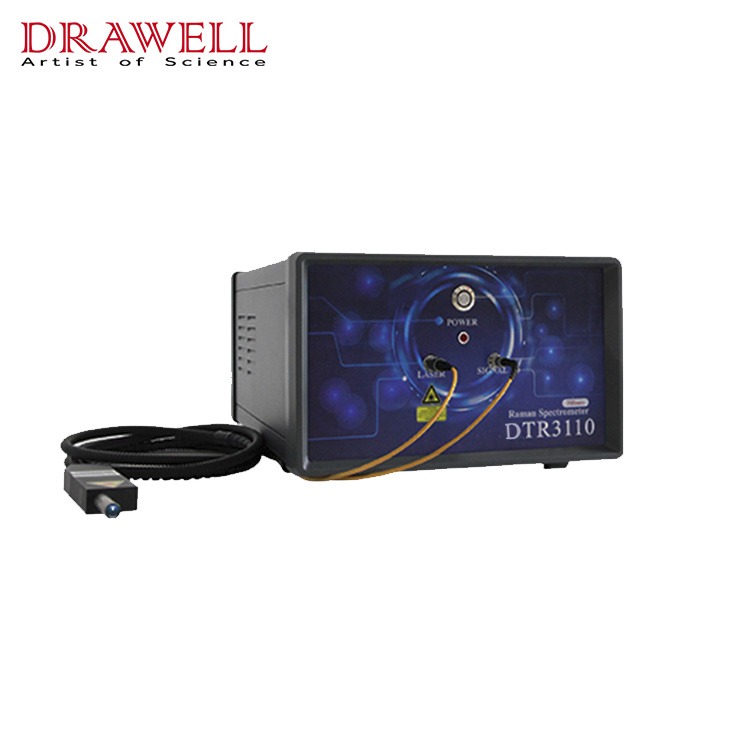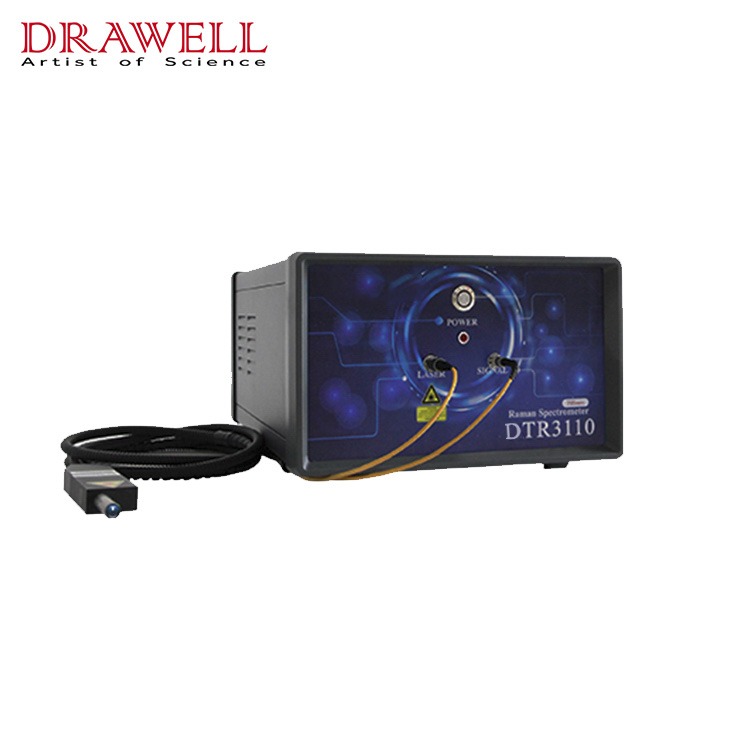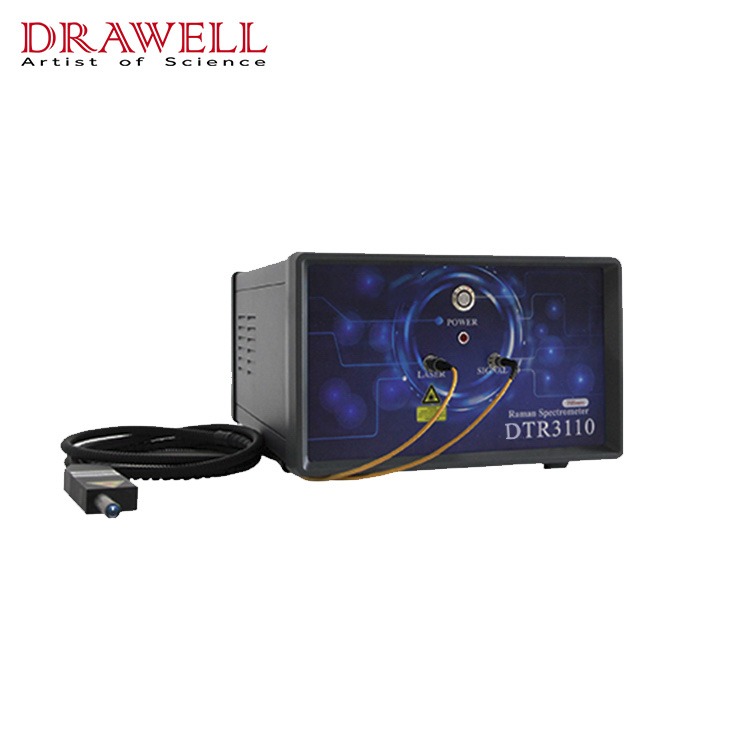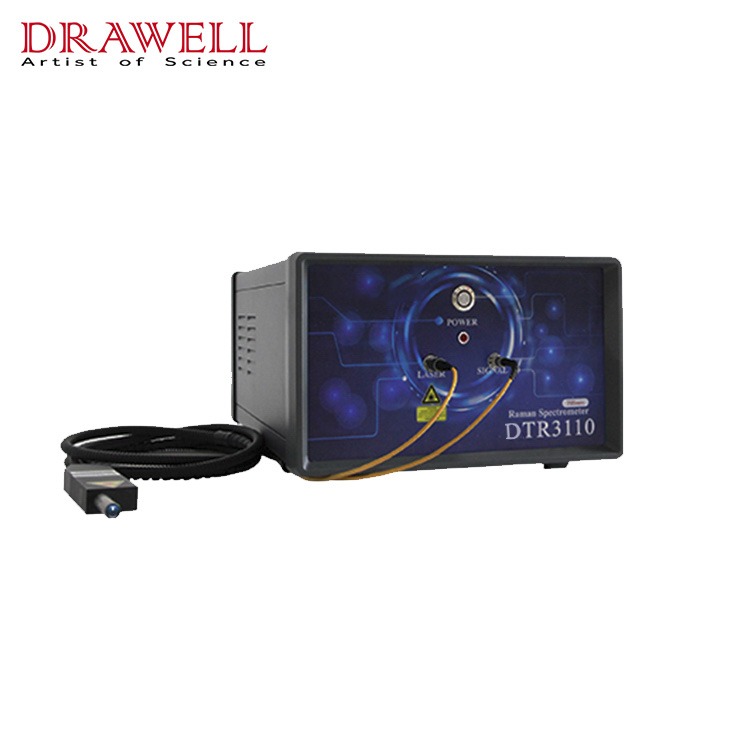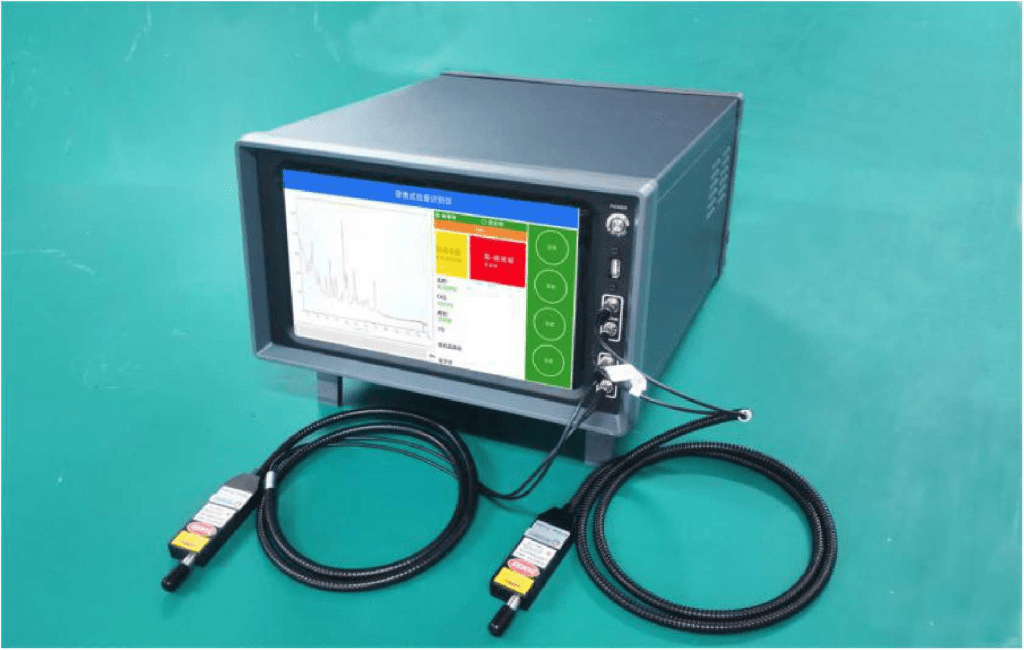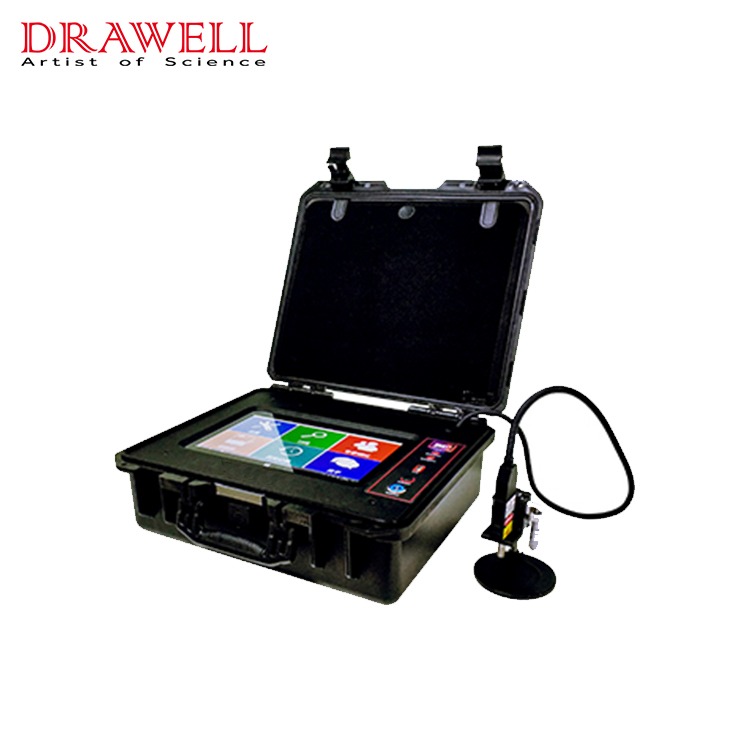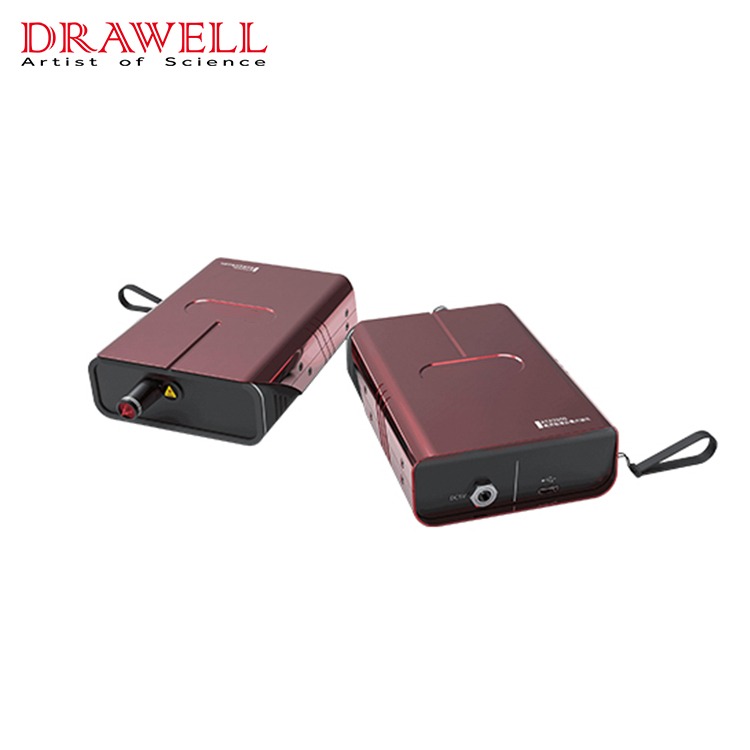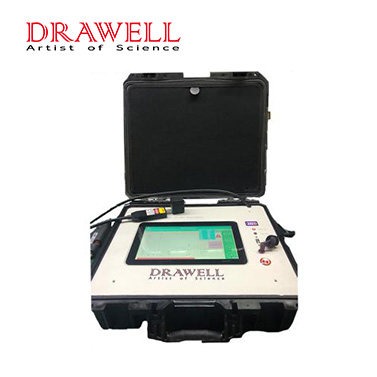Raman spectrometers are the most common laboratory testing instruments. As a professional Raman spectrometer manufacturer, Drawell will answer your frequently asked questions about Raman spectrometers.
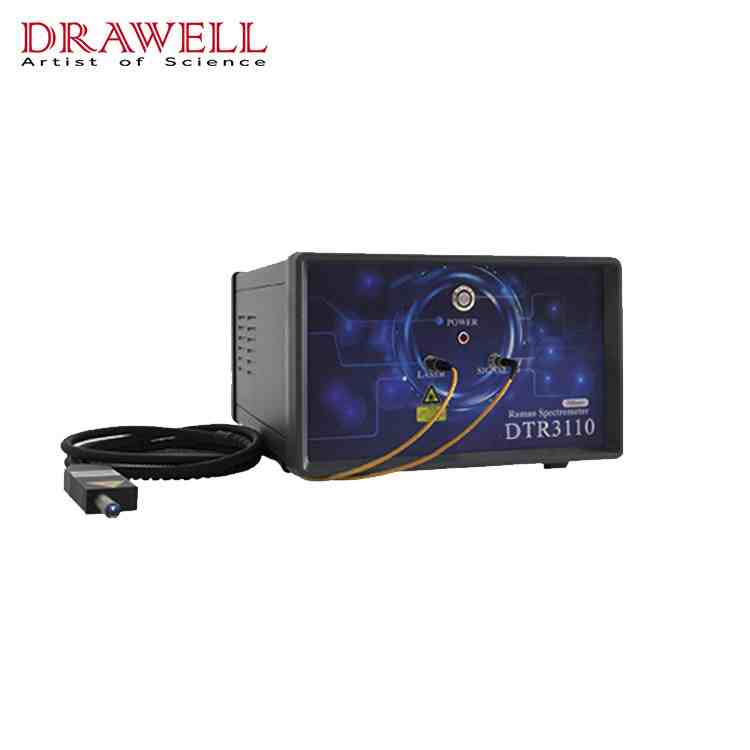
1. What is the difference between laser Raman spectroscopy and infrared spectroscopy?
First of all, we need a pictorial explanation. The infrared spectrum is “concave” and the Raman spectrum is “convex”. The two complement each other.
(1) In essence, both are vibrational spectra, and the measurement is the excitation or absorption of the ground state, and the energy range is the same.
(2) Raman is a differential spectrum. Figuratively speaking, the price of Coke is 1 cent. If you throw in 1 cent, you can get Coke. This is infrared. But if you throw in 1 yuan, a bottle of Coke and 90 cents of money will come out, and you can still know the price of Coke. This is Raman.
(3) The selectivity rules of the spectrum are different. IR can only be measured when the dipole moment of the molecule changes, while Raman can only be measured when the polarizability of the molecule changes.
(4) IR is easy to measure, and the signal is very good, while the signal of Raman is very weak.
(5) The wavelength range used is different. IR uses infrared light, especially mid-infrared light. Many optical materials cannot penetrate, which limits their use. However, there are many wavelengths that can be selected by Raman, from visible light to NIR. use. Of course, there are many different places, such as sample preparation, IR is sometimes relatively complex, time-consuming, and may damage the sample, but Raman does not have these problems.
(6) Raman and infrared are complementary to each other most of the time, that is to say, infrared is strong, Raman is weak, and vice versa! But there are some cases where the information detected by the two is the same.
2. What is a blue shift and what is a red shift?
Generally speaking, blue-shift means that the wavelength moves to the short wavelength direction, and the wave number increases; red-shift means that the wavelength moves to the long wavelength direction, and the wave number decreases.
(1) Redshift In the fields of physics and astronomy, it refers to the phenomenon that the wavelength of the electromagnetic radiation of an object increases for some reason. In the visible light band, the spectral line of the spectrum moves a certain distance toward the red end, that is, the wavelength becomes longer and the frequency decreases. . Conversely, the phenomenon of shortening the wavelength and increasing the frequency is called a blue shift.
(2) The “red shift” and “blue shift” of the spectral peak refer to the phenomenon that the chromophore in the molecular spectrum is affected by the influence of other parts of the molecule connected to it and the influence of the solvent, and the position of its absorption peak shifts. When the peak moves in the long-wave direction, it is called a “red shift”, and when it moves in the short-wave direction, it is called a “blue shift”.
This phenomenon occurs not only in the transition of electronic energy levels of molecules, but also in the transitions of vibrational and rotational energy levels of molecules, but few people call it that in infrared spectroscopy.
In atomic emission spectroscopy, because the atomic line is generated by excited atoms or ions in the gas state, its wavelength is not affected by the environment in the original molecule, nor is it affected by the solvent, so it does not exist at all. “Redshift” and “Blueshift” phenomena in molecular spectroscopy.
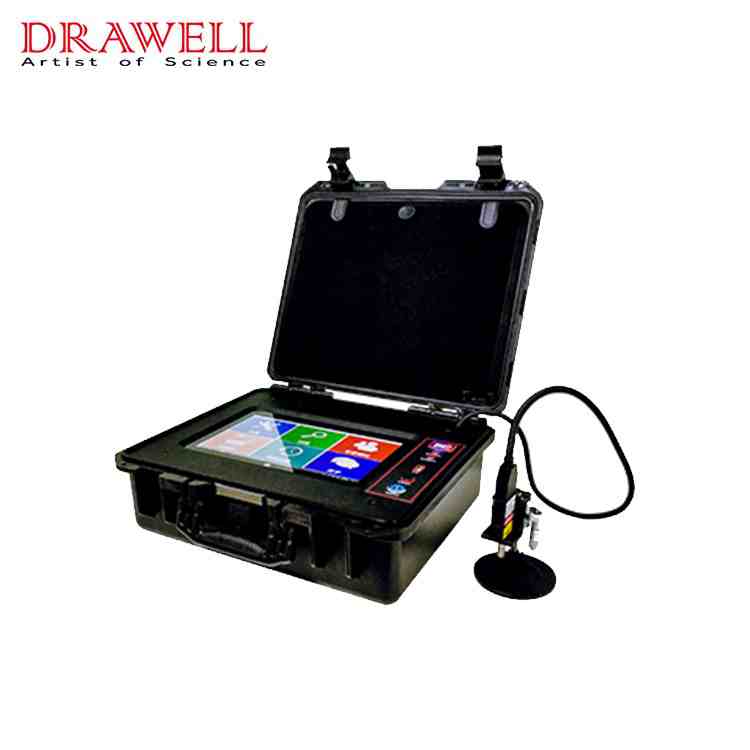
3. How many laser light sources are there in Raman spectrometers?
(1) Argon ions, semiconductors, helium-neon
(2) The most widely used visible light lasers are argon ion lasers, which can generate 10 wavelengths of laser light, of which the strongest are 488 nm (blue light) and 514 nm (green light) lasers.
The most commonly used and stable performance is the 514nm laser; in addition, 532nm solid-state diode-pumped lasers, 632.8nm (red light), 780nm and other visible light lasers; and 785nm diodes, 830nm near-infrared lasers; neodymium-doped lasers The yttrium aluminum garnet (YAG) laser is used as the light source for Fourier transform Raman spectroscopy, and its laser wavelength is 1064 nanometers (infrared); dye lasers are currently more mature and widely used tunable lasers, which are resonant Raman lasers. The ideal light source for research.
Generally speaking, Raman spectroscopy has nothing to do with the wavelength of the laser. The choice of lasers with different wavelengths mainly depends on the research object. If you study biological proteins, cells, etc., you need near-infrared light with a longer wavelength, which avoids the effect of fluorescence on pulling Mann spectroscopy.
However, for some dark and black powder samples, due to the thermal effect of near-infrared, the thermal background interferes with the Raman spectrum, and it is reasonable to choose a laser in the visible region. For studying chemiluminescence and fluorescence spectroscopy, UV lasers are the choice. Therefore, when studying pigments, it is enough to select two wavelengths of 514 nm and 785 (or 830 nm) lasers. For red, yellow, and white pigments, use 785 nm lasers for analysis, and for blue and green pigments use 514 nm laser for analysis.
(3) Before the appearance of laser, low-pressure mercury lamp was mainly used as the light source, but it is rarely used now. In order to excite Raman spectroscopy, the most important requirement for the light source is that it should have fairly good monochromaticity, that is, the line width should be narrow, and it should be able to give high irradiance on the sample.
Gas lasers meet these requirements, have good self-alignment, and are plane-polarized. Various gas lasers can provide excitation lines of many discrete wavenumbers with different power levels. The most commonly used is the argon ion laser, with the strongest spectral lines at wavelengths of 514.5nm and 488.0nm, and a single-frequency output power of about 0.2 to 1W. A He-Ne laser (632.8 nm, about 50 mW) can also be used.
4. How to pretreat samples for laser Raman testing?
(1) Generally speaking, samples do not need to be pretreated, which is not as troublesome as infrared. Analyzing solids and liquids is easier, but gases are more difficult unless the density is very large, then only large Raman
(2) It’s better to polish the surface or clean it with something like alcohol and acetone. It’s okay if you don’t. Just focus on a clean and flat place when doing it.
5. How to choose the excitation wavelength in Raman spectroscopy experiments? 1064nm? Or 785nm or 633nm?
(1) Theoretically, Raman spectroscopy has nothing to do with the wavelength of the excitation light. However, some samples will produce strong fluorescence under the excitation of a wavelength of laser light, which will interfere with the Raman spectrum. At this time, a different excitation light should be used to avoid the interference of fluorescence. If the sample does not fluoresce under different laser excitations, any laser can be used.
(2) According to Rayleigh’s law, the intensity of the Raman scattering line is inversely proportional to the fourth power of the wavelength of the excitation light. If factors such as the detector are not considered, of course, the shorter the wavelength of the excitation light, the better, preferably an ultraviolet laser.
But unfortunately, the best response wavelength of the CCD currently used in Raman spectrometers is around 620nm, and the response below 480nm is very poor. If the CCD technology is not further improved, it is difficult to say that ultraviolet lasers are useful for Raman spectrometers. laser.
6. What is the difference between Fourier Transform Raman Spectroscopy and Laser Raman Spectroscopy?
(1) The working principle is different
(2) Fourier Raman focuses on the analysis of organic samples, using a near-infrared laser (1064nm), with low energy and weak signal. The dispersive Raman can choose lasers of different wavelengths (200-800nm), with high energy and high sensitivity.
(3) The use of Fourier Raman can reduce the fluorescence interference of the sample.
(4) Fourier Raman is cheap
(5) There are many users who basically buy dispersion laser Raman now.
The effect of the Fourier Raman measurement of water and black sun level is not good, because the absorption of infrared light by water and black samples is relatively strong, which will cause the originally weak Fourier Raman signal to become weaker.
Summary
Of course, these are not all issues when using or purchasing a Raman spectrometer. Therefore, if you want to know more about Raman spectrometers, or you want to buy the Raman spectrometer that is really suitable for you, please contact us and we will recommend the right product for you.

